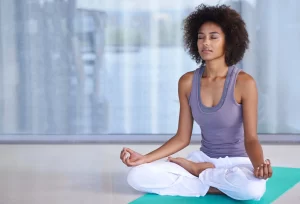Finding Serenity: Effective Techniques for Stress Reduction
In a world that rewards results over relaxation, stress has become an inevitable part of life for many people. However, managing stress is essential for maintaining overall health and well-being. Fortunately, there are numerous techniques and practices that can help reduce stress and promote inner peace and relaxation. In this blog, we’ll explore some effective techniques for stress reduction, including mindfulness, meditation, deep breathing, and progressive muscle relaxation, and how each can contribute to a calmer and more balanced life.
Mindfulness:
- Mindfulness is the practice of paying attention to the present moment with openness, curiosity, and acceptance. By cultivating mindfulness, individuals can develop greater awareness of their thoughts, emotions, and sensations, and learn to respond to stressors with greater clarity and resilience. Here are some mindfulness techniques for stress reduction:
- Mindful Breathing: Take a few moments to focus on your breath, observing the sensation of each inhale and exhale. Notice the rise and fall of your chest or the sensation of air passing through your nostrils. Mindful breathing can help calm the mind and anchor your awareness in the present moment.
- Body Scan: Perform a body scan meditation, systematically bringing your attention to different parts of your body, from head to toe, and noticing any sensations or areas of tension. This practice promotes relaxation and body awareness, helping release physical tension and stress.
- Mindful Walking: Take a leisurely walk outdoors and practice walking meditation, paying attention to each step and the sensation of your feet touching the ground. Notice the sights, sounds, and smells around you, allowing yourself to fully engage with the present moment.
Meditation:
- Meditation is a powerful practice for calming the mind, reducing stress, and promoting relaxation and inner peace. There are many different forms of meditation, including focused attention meditation, loving-kindness meditation, and body scan meditation. Here are some meditation techniques for stress reduction:
- Guided Meditation: Listen to a guided meditation recording or app that leads you through a relaxation exercise, visualization, or mindfulness practice. Guided meditations can be particularly helpful for beginners or those who struggle to quiet the mind on their own.
- Breath Awareness Meditation: Sit quietly and focus your attention on your breath, observing the sensation of each inhale and exhale. When your mind wanders, gently bring your focus back to your breath. Breath awareness meditation helps calm the mind and promote relaxation.
- Loving-Kindness Meditation: Practice sending love, compassion, and goodwill to yourself and others through loving-kindness meditation. Repeat phrases such as “May I be happy, may I be healthy, may I be safe, may I live with ease,” extending these wishes to yourself, loved ones, and all beings.
Deep Breathing:
- Deep breathing exercises can help activate the body’s relaxation response, counteracting the stress response and promoting feelings of calm and relaxation. Here are some deep breathing techniques for stress reduction:
- Belly Breathing: Sit or lie down in a comfortable position and place one hand on your abdomen. Inhale deeply through your nose, allowing your belly to rise as you fill your lungs with air. Exhale slowly through your mouth, feeling your belly fall. Repeat for several breaths, focusing on the sensation of deep relaxation with each exhale.
- 4-7-8 Breathing: Inhale deeply through your nose for a count of 4, hold your breath for a count of 7, and exhale slowly through your mouth for a count of 8. Repeat this cycle several times, allowing each exhale to release tension and stress from the body.
Progressive Muscle Relaxation:
- Progressive muscle relaxation is a technique that involves tensing and relaxing different muscle groups in the body to release physical tension and promote relaxation. Here’s how to practice progressive muscle relaxation:
- Start by finding a quiet and comfortable place to sit or lie down. Close your eyes and take a few deep breaths to center yourself.
- Begin by tensing the muscles in your feet and toes, holding the tension for a few seconds, and then slowly releasing and relaxing the muscles. Notice the sensation of relaxation spreading throughout your feet and lower legs.
- Continue to work your way up the body, tensing and relaxing each muscle group, including the calves, thighs, buttocks, abdomen, chest, arms, hands, shoulders, neck, and face. Focus on releasing any tension or stress with each exhale, allowing your body to become increasingly relaxed and at ease.
Incorporating stress reduction techniques into your daily routine can have profound benefits for your physical, mental, and emotional well-being. Whether you choose to practice mindfulness, meditation, deep breathing, progressive muscle relaxation, or a combination of these techniques, finding what works best for you is key. By making stress reduction a priority and committing to regular practice, you can cultivate greater resilience, inner peace, and overall balance in your life.
This topic explores effective techniques for stress reduction, including mindfulness, meditation, deep breathing, and progressive muscle relaxation, and how each can contribute to a calmer and more balanced life. It provides practical tips and exercises for incorporating these techniques into daily life and emphasizes the importance of making stress reduction a priority for overall health and well-being.

